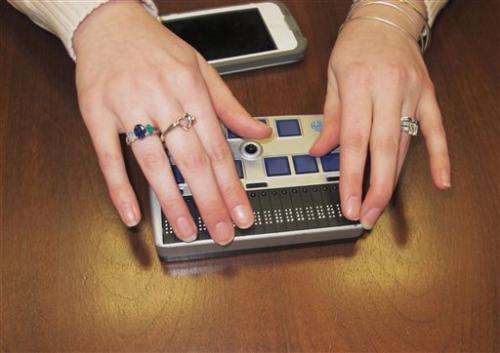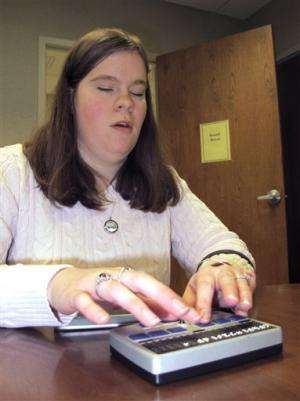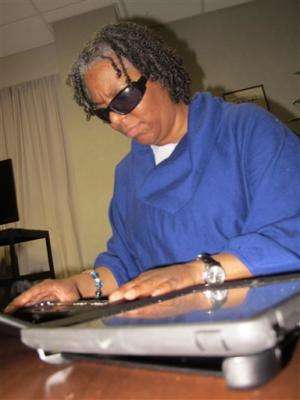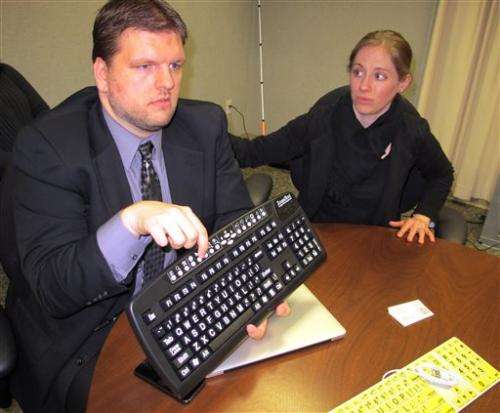High-tech items giving deaf-blind online access

Tanisha Verdejo loves to surf the Internet for online shopping deals. She chats on Facebook, learns about new recipes and enjoys sending emails to friends and family.
Verdejo, who can't see or hear, could do none of that a year ago.
The 40-year-old New Yorker lives in a group home in Port Washington and is among the thousands of people with combined hearing and vision loss to have benefited from a pilot program called iCanConnect. The initiative provides low-income deaf-blind individuals with the most up-to-date telecommunications devices for free and special training to use them.
"For me, it's opened up my whole world," Verdejo said through a sign language interpreter at the Helen Keller National Center in suburban Long Island. The center, along with the Boston-based Perkins School for the Blind, is working with state agencies and others around the country to distribute items like refreshable Braille displays, amplified telephones and computer programs that allow for large print displays for those who may be vision-impaired but not entirely blind.
Much of the equipment is compatible with Apple devices such as the iPhone and iPad and connect via Bluetooth.
"Modern technology has rapidly progressed, and we are available to provide individuals with combined vision and hearing loss the best technology and telecommunications tools for their individual needs," said Thomas J. Edwards, president of Helen Keller Services for the Blind, which has 11 regional offices around the country.

For Verdejo and others, the changes have been dramatic.
"I'm able now to access anything I want," Verdejo said. "I mean, I have all these apps here and can see anything now. I see it through my Braille device."
Established by the Federal Communications Commission, the pilot program allocates $10 million annually for low-income deaf-blind people to get the equipment. The program, which is in the second year of a three-year study, is open to individuals earning less than $44,680 annually, with income limits slightly higher in Hawaii and Alaska.
An estimated 2,000 people have benefited in the program's first 18 months, said Betsy McGinnity, a Perkins spokeswoman. She said she was confident it could be extended beyond the three-year study period.
Dr. Christian Vogler, director of the Technology Access Program at Gallaudet University in Washington, D.C., said because the deaf-blind population is relatively small—about 100,000 in the U.S., according to one estimate—the high-technology devices are very expensive to produce. Some refreshable Braille displays—hand-held electronic devices that employ a network of tiny pins that pop up and down through holes, scrolling letters that a blind person can read—can cost as much as $6,000.
Software that enlarges text on computer screens can sometimes cost $800 to $1,000.

"There's not a lot of profit for these companies; the equipment is very expensive and most can't afford it," Vogler said.
Other devices include amplifiers that assist those with limited hearing loss to know when a telephone is ringing or computer programs that accent certain colors that may assist the vision-impaired.
Applicants for the technology go through a rigorous screening process to determine which devices could benefit them best, said Ryan Odland, the New York coordinator of the distribution program for the Helen Keller National Center. Those accepted are trained in using the equipment.

"We do not order equipment for anything other than to gain equal access to telecommunications," Odland said. "We tend to be very thorough with our assessment to be certain what equipment our consumer wants is ideal for them."
© 2014 The Associated Press. All rights reserved.



















